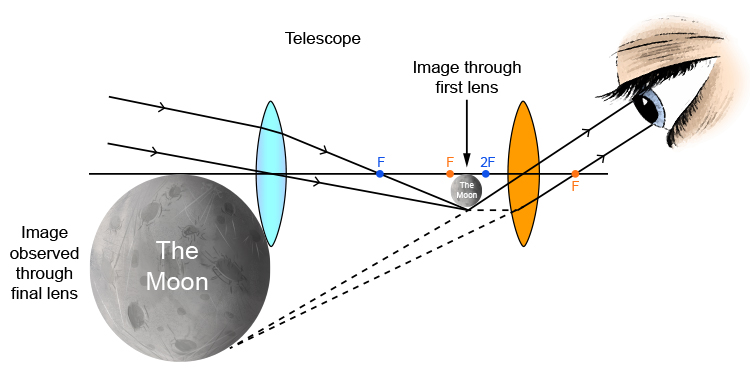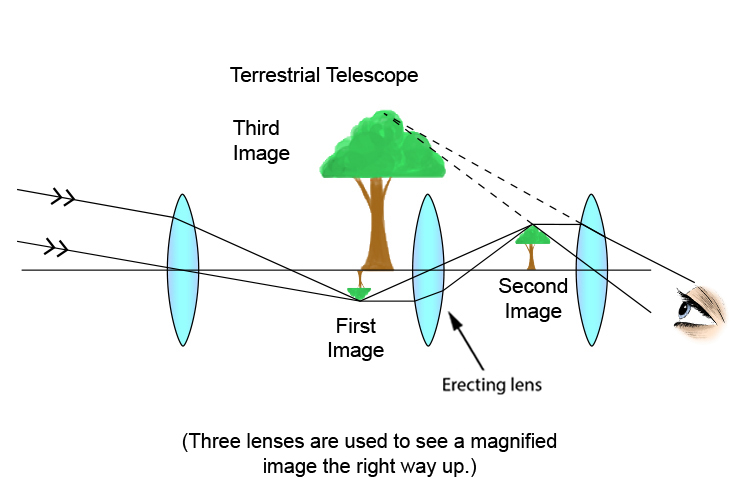Convex lens use – Telescope
The telescope needs a large lens to first collect as much light as possible from the source. The larger the first lens, the brighter the image. A telescope is designed to capture the light from something far away, so the light coming in is practically parallel.
The first large convex lens is used to bring the image into focus (see convex lens – object at more than `2F`).
The final lens on a two convex lens telescope magnifies that image (see object between lens and `F`).
This is similar to a microscope except, with a telescope, the principal focal length of the first convex lens must overlap the principal focal length of the final convex lens.
The difference between a
microscope and telescope is a
SUBTLE DIFFERENCE
IN POSITION
of Principal Focal Length
The diagram below shows how this is explained using ray diagrams:
Telescope

There is one major problem with a two convex lens telescope: the final image is upside down.
Maybe when we look at the stars we don't care that we see the stars upside down. But when you look at something at a distance but on Earth it is better to have your final image the right way up. This is achieved by using another convex lens to right the image.
NOTE: Another lens makes the telescope a lot more expensive.
Terrestrial telescope

There are some more problems with convex lenses and telescopes, the more powerful you try and make them. One is that you need defect-free lenses which are more difficult to make and, for the best, very expensive.
Convex lenses also suffer from light aberration, a distortion of the spectrum of coloured light, which means different colours refract at slightly different angles. Also, as lenses get more powerful they get thicker and let less light through, so that stars can become fainter and more difficult to observe.
We are not getting into details here but other methods have been invented to collect the light using curved mirrors and then magnifying the image.




